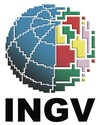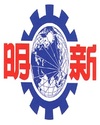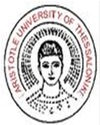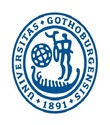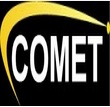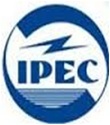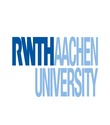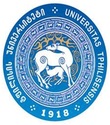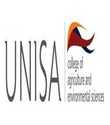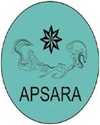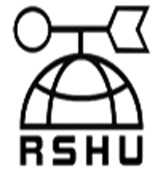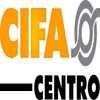Day 3 :
- Track 1: Geosciences and Geology
Track 3: Geophysics and Atmospheric Sciences
Location: Terra Mitica

Chair
Francois Robert
Muséum MNHN/CNRS, France

Co-Chair
Sergey Samoylenko
Institute of Volcanology and Seimology FEB RAS, Russia
Session Introduction
Sergey B Samoylenko
Russian Academy of Sciences
Russia
Title: On formal classification of volcanic eruption types and regimes based on the similarity theory
Time : 11:30-11:50

Biography:
Sergey B Samoylenko has completed his PhD at the age of 27 years from Yeungnam University (South Korea). He is the senior researcher at Institute of Volcanology and Seimology FEB RAS, Kamchatka, Russia, studying the active volcanism and the dynamics of volcanic eruption. He has published more than 10 papers in reputed journals and has been serving as an editorial board member of repute.
Abstract:
Application of the similarity theory principles and dimentional analysis, supplemented by some orinal approaches, suggests the way to acheve following goals which are significant for understanding and modelling of the volcanic process. 1. To introduce and to define more exactly the formal classification of volcanic eruption types in the same way as it is done for the flow regimes in terms of dimensionless numbers in fluid mechanics. 2. To avoid the necessity of knowing the exact values of physical parameters which are hard or even impossible to measure (viscosity, the conduit size etc.) in modelling the volcanic processes. Instead the few number of nondimentional similarity criteria, specific to volcanology, is suggested to be used. The quanities of similarity criteria could be estimated according to observable qualitative characteristics of the process regime to be modelled. 3. To bring the variety of existing mathematical and physical models of volcanic eruptions to a uniform system. It allows to compare different models and, mostly important, to outline their applicability limits.
Francois Robert
Muséum MNHN/CNRS
France
Title: Oxygen isotopes in 3.0 Gyr.cherts: a record of the oceanic temperature ?
Time : 11:50-12:10

Biography:
Francois Robert is an isotope geochemist specialized in Cosmochemistry, Precambrian sediments and organic geochemistry.
Abstract:
A global cooling of the oceans since 3.5 Gyr is inferred from the continuous record of the coupled 18O/16O and 30Si/28Si isotope ratios (expressed in δ18O and δ30Siunits) in siliceous seawater sediments (cherts) [1-2]. During the past decade, marked advances in this interpretation were made from in-situ analysis at a micrometric spatial resolution. Among the most remarkable findings of this type of analysis is the discovery of a large internal distribution of δ18O (up to 8‰) in the microquartz. This mineral stands for the first recrystallization step of amorphous opal CT precipitated from seawater and, in this respect, should exhibit the best preservedisotope compositions.Such internal δ18O distribution is irreconcilable with a thermal isotope equilibrium between seawater and precipitated silica: large isotope fractionation must have taken place in closed micrometric systems, likely through dissolution-reprecipitation of opal CT during diagenesis.Several petrographical and geochemical criteria wereused to reconstruct the original δ18O of the precipitated silica.These criteria should be regarded as guides to better constrain seawater paleo-temperature reconstructions. Although some Archean microfossil-rich cherts from the Farrel Quartzite (Pilbara Cration /Australia - 3.0 Gyr.) [4] exhibit low δ18O compatible only with a silica precipitation from hot (80°C) hydrothermal fluids,a warm temperature (≥50°C) for the Archean oceans remains the most plausible conjecture to account for the secular isotope variations in cherts.
Gour-Tsyh Yeh
National Central University, Taiwan
Title: Advances in computational models of subsurface media: Past, present and future
Time : 12:10-12:30
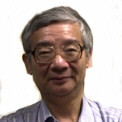
Biography:
Not Available
Abstract:
The development of subsurface media models and their applications to real-world problems has evolved significantly since 1970’s. This talk discusses the physical, chemical, biological, and mechanical processes that control the evolution of groundwater quantity, quality, and deformation as well as subsidence. These processes include multiphase flow of arbitrary number of phases, thermal transport, geo-mechanics, reactive transport, and propagation of electro-magnetic waves as well as their interactions and feedbacks with the media. The advances of computational models centre on their increasing design capability to foster these coupling processes: from the simplest one-phase groundwater flow to the most complete aforementioned processes. Widely used models developed by academia, research institutes, government agencies, and private industries will be reviewed in terms of the processes included in the governing equations, types of boundary conditions, discretization methods, computational platform, and users' friendliness. Four computational models developed by the author will be briefed and example problems to groundwater management and remediation will be given.
Ayfer Ozdemir
Middle East Technical University, Turkey
Title: Guney formation oil reservoir rock characterization, Eregli-Ulukisla Basin, Turkey
Time : 12:30-12:50

Biography:
Ayfer Ozdemir is PhD student at the Middle East Technical University, Geodesy and Geographic Ä°nformation Technologies. She is a geological engineer at Republic of Turkey Ministry of Forestry and Water Affairs. She is interested in environment, geology, groundwater, GIS, remote sensing and hydrologic and hydrogeologic modelling.
Abstract:
The aim of this study is to demonstrate petroleum reservoir rock properties of Guney formation in Eregli-Ulukisla Basin in Turkey. The Guney formation has typical outcrops of sandstone-shale formation around Guney village in the Eregli-Ulukisla Basin. The permeability-porosity analyses and petrographic examinations were done on the 58 sandstone samples which were compiled from the study area. The porosity values change from 6.44 % to 35.14%, and the permeability values change from 0.2 md to 32 md. The sandstones are medium-worse rounded and poorly sorted according to the petrographic examinations. The porosity-permeability values of samples taken from channel fillings on the study area are high. According to the petrographic examination and porosity-permeability analyses results, The Guney formation represents generally worse-medium grade petroleum reservoir rock properties.
Lia Matchavariani
Iv. Javakhishvili Tbilisi State University
Georgia
Title: Ecological aspects of pedogenesis and evaluation of ecosystems in Georgia on the basis of edaphic factors
Time : 12:50-13:10

Biography:
Lia Matchavariani is Professor of Tbilisi State University (TSU), Faculty of Exact & Natural Sciences, Soil Geography Dep., Head of Chair; Director of the Institute “Applied Ecology” at TSU; Chief of Doctoral Program “Applied Ecology”, Bachelor Program “Geography” and co-chief of Master Program “Physical Geography & Environment Sustainable Development” at TSU. She is a Doctor of Science in Geography (Geo-ecology) from TSU (2006); PhD in Agrarian Sciences (Soil Science) from GSAU (1989). She has over 150 publications (Sci. papers, textbooks, monographs, etc.).
Abstract:
Among the main Geo-spheres of the Earth (Atmosphere, Hydrosphere, Lithosphere, and Biosphere), the rightful place is occupied by the Pedosphere. All natural and anthropogenic processes, taking place within each ecosystem, are reflected in soils. One of the most important tasks of geographical studies is evaluation of ecosystems’ sensitivity. It allows: To identify the potential and current trends of landscapes; to determine the level of their sustainability to the various natural and anthropogenic impacts; to establish the level of endurance of anthropogenic pressure. Such kind of studies provides an opportunity to create a scientific basis for sustainable environmental management and spatial planning. On the bases of the edaphic factor analysis, the assessment of ecosystem sensitivity was carried out. In addition, some methodological aspects of the evaluation were developed. Along with the geographical factors (surface slope, migration regime, the level of relief dissection), the main edaphic parameters having a huge impact on the sensitivity of the ecosystems are: Density of the parent rocks, structure and texture of soils. Each of these parameters was estimated to sensitivity individually and comprehensively based on GIS and using the method of mathematical statistics, in particular, a way of balancing data. Analysis of Geo-edaphic factors showed that Georgia’s ecosystems differ in sensitivity. Sometimes, one of the indicators has a main role, but in some cases - several indicators together at the same time. The next levels of sensitivity were installed in Georgia’s territory: Highly sensitive, sensitive, medium-sensitive, low-sensitive, and very low-sensitive; as well as the features of territorial distribution of ecosystems’ sensitivity were identified.
Marilú Bouchon Corrales
Instituto del Mar del Peru
Peru
Title: Valuable contribution of the advance monitoring in the fishery management of Peruvian anchovy
Time : 13:50-14:10

Biography:
Mariu Bouchon Corrales is a biology from Ricardo Palma University of Lima. Shi has a Master of Marine Science in Federico Villarreal University Of Lima, Peru. She is specialist in pelagic resources main anchovy and the impacts of El Niño and La Niña events. She has over 20 publishes and she working in IMARPE and at this moment she is the Director of Research on Pelagic Resources.
Abstract:
The Peruvian anchovy (Engraulisringens), is localized in the Humboldt Current Ecosystem. This supports the biggest mono-specific fishery around the world; it is probably the best monitored large ecosystem. This important monitoring is used for seeing the state of resources. Fisheries regulations in order to protect the resources and must be in a real time. The Peruvian pelagic fishery monitoring system is characterized by daily frequency and quick advice. The Peruvian Marine Research Institute (IMARPE), has seven laboratories along the coast, takes fishery and biological information of Peruvian anchovy in main ports and has a Program of observers on board that monitoring the main anchovy density areas. This information is sent to Pelagic Area which processes, analyzes and evaluates the status of anchovy and publishes a daily report and send advice to the government to the quickly application. The logbooks have improved satellite-based vessel monitoring system (VMS) to register interaction of vessels in a fishing area and registered biological and ocenographically information. Also, they use mobile phones to have a quickly communication and the information is registered in data base IMARSIS. All of these has improved the management the pelagic Peruvian fishery and it’s probably Peru is only place in the world who have a “Adaptative” management strategy with scientific data in quasi-real time and this is related with a fast decision to the satisfactory management of the pelagic resource.
Nuha E Mohamed
Al Neealin University, Sudan
Title: Integrated electrical resistivity tomography and magnetic surveys in a mineralization zone in Erkowit, Red Sea State - Sudan
Time : 14:10-14:30

Biography:
Nuha E Mohamed has completed her PhD in 2007 from FPM-Al Neealin University in Sudan cooperated with the TU-Berlin in Germany. She was the Director of the Geophysics Department at the FPM till 2011. She published more than 10 papers in reputed journals and has been serving as an Editorial Board Member of repute. She was prompted to an Associate Professor in 2012 at the FPM.
Abstract:
The present study focus on integrated geophysical surveys carried out in the mineralization zone in Erkowit region, Eastern Sudan to determine the extensions of the potential ore deposits on the topographically high hilly area and under the cover of alluvium along the nearby wadi and to locate other occurrences if any. The magnetic method (MAG) and the electrical resistivity tomography (ERT) were employed for the survey. Eleven traverses were aligned approximately at right angles to the general strike of the rock formations. The disseminated sulfides are located on the alteration shear zone which is composed of granitic and dioritic highly ferruginated rock occupying the southwestern and central parts of the area, this was confirmed using thin and polished sections mineralogical analysis. The magnetic data indicates low magnetic values for wadi sedimentary deposits in its southern part of the area and high anomalies which are suspected as gossans due to magnetite formed during wall rock alteration consequent to mineralization. The significant ERT images define low resistivity zone as traced as sheared zones which may associated with the main loci of ore deposition. The study designates that correlation of magnetic and ERT anomalies with lithology are extremely useful in mineral exploration due to variations in some specific physical properties of rocks.
Stella Kostopoulou
Aristotle University of Thessaloniki
Greece
Title: Climate change impacts on Mediterranean tourism destinations

Biography:
Stella Kostopoulou is an Assistant Professor in Department of Economics at Aristotle University of Thessaloniki, Greece
Abstract:
Tourism is an important source of economic growth in the Mediterranean and one of the key industrial sectors for many countries in the region. Being strongly weather dependent, the tourism sector is expected to be particularly affected by climate change within the next decades. The effects of climate change are challenging all industries, but are especially relevant to the long term growth of the tourism industry particularly in Mediterranean summer tourism destinations. Climate change is expected to shift summer tourism patterns, eventually leading to an increase of tourist volume and expenditures in colder countries and fall in warmer countries. The impacts of climate change on summer tourist flows would be entirely due to the much higher temperatures forecasted for the summer, which would make summer tourism destinations less attractive. The relationship between climate change and tourism is expected to have important economic and development implications for many tourism destinations globally. Even though there is a recent surge in academic debate worldwide on climate change and its impacts on tourism, there have been few studies specifying these impacts on the countries of the Mediterranean basin. The purpose of this paper is to present an overview of the existing literature on the impact of climate change on tourism in the Mediterranean region and to set out an agenda for future research. The paper outlines the conceptual framework of the different types of climate change impacts and discusses how the suitability of the Mediterrannean climate for tourism will change, and how this will affect destinations and tourism flows in the region. The paper aims at setting an agenda for future research concerning the necessity of climate change economic impact studies on Mediterranean summer tourism, related especially to vulnerability issues on a local level.
- Track 2: Meteorology and Planetary Sciences
Track 5: Technologies and Applications of Earth Science
Location: Terra Mitica

Chair
Fedora Quattrocchi
Istituto Nazionale di Geofisica e Vulcanologia, Italy

Co-Chair
Yung-Cheng Chang
Minghsin University of Science and Technology, Taiwan
Session Introduction
Fedora Quattrocchi
Istituto Nazionale di Geofisica e Vulcanologia, Italy
Title: The Commissione ICHESE case history as a poor geo-ethics and communication episode in the frame of the Nimby Sindrome and geopolicy weakeness
Time : 09:00-09:20

Biography:
Fedora Quattrocchi is a “Research Director” technologist at INGV. She received his Earth Sciences Degree at University “La Sapienza” of Rome “cum laudem” in 1988. She was a contract Professor of University of Rome Tor vergata, Enginnering. She tutored a lot of degree theses and PhD students over different Italian universities. She was II level International Master “Technologies for the Greenhouse Gases reduction” University of Perugia (2004), Master Business School Il Sole24 Ore: “Multimedial Communication and Economical-Political Journalism” Responsible, since 2007, of Functional Unit “Fluid Geochemistry, Geological Storage and Geothermics” INGV Section “Seismicity and tectonophysics”. She is Director of Research in Line Energy and Georesources, Rome 1, INGV.
Abstract:
In the frame of energy/heat production from underground by new and enhanced technologies, the paper considers the Italian Commissione ICHESE case history as an international commission involved by local policy of the Emilia Romagna Region to answer two question where the first was completely out to any rational consideration, namely a political question than a scientific question to experts coming from abroad! The paper will rework any step-in science and communication-of this “dark side of the moon” of the complex relationships between stakeholders, policy makers, journalists and science despite the early and fruitful cooperation between industry and Academia/Research Centers in the frame of growing needs of “Debate Publique”. This complex and motley stakeholders community made by scientific-industry-institutions is involved in the difficult task to study and accept (or refuse) projects strongly impacting the lived territory & underground in densely populated countries in terms of appropriate public communication and sound deontological behavior (Geo-ethics). Successively, the paper recalls and rework years of “scientific” communication within the mass-media in this field highlighting the positive and negative messages in comparison to the true and objective scientific experimental data gathered by the real scientific work as perceived by citizens of medium scholastic culture which not delve the geologic disciplines but receive simply the journalistic front-end very often as sensationalist scoop. This path progressively tangles as a consequence of the complex and with conflicting use of underground to produce energy (hydrocarbons, heat as well as geo gas storage, geothermal reserves, unconventional gas exploitation and REE mining).
J. Sanchez del RÃo Saez
Rey Juan Carlos University
Spain
Title: Muons detection and the climate change
Time : 09:20-09:40

Biography:
J. Sánchez de Río has completed his PhD at the age of 28 years from Autónoma University and he has done his postdoctoral studies at the IEM-CSIC Experimental Nuclear Physics Group. He is now working as a researcher in the Statistics and Informatics department at Rey Juan Carlos University. He has published more than 25 papers in reputed journals and 4 patents related to Biometrics. He has participated in many international conferences related to Environmental Science, Photonics, Nuclear Science and Pattern Recognition. He has been lecturer of Biophysics at IE University.
Abstract:
It is evident that the climate is changing and that the temperature of our planet is increasing. On the other hand the use of CFCs (chlorofluorocarbons) and other chemical compounds accelerate the destruction of the ozone molecules in the stratosphere. In this work a method to explain the UV-B radiation and temperature variation on the Earth surface and that is not correlated to a change in the solar but to an ozone layer thickness diminution is proposed. The increase in size of the solar flares and consequently to the cosmic muons detected on the Earth surface can be the reason of an increase of the UV-B radiation emitted by the sun. Firstly the data obtained with an UV-B spectrometer that captures the amount of diffuse and direct UV-B radiation coming from the sun and that goes through the different atmosphere layers is presented. Using statistical methods for several years a deviation of the normality in the UV-B radiation measured in a specific location is probably owed to a change in the amount of stratospheric ozone. Secondly an energy histogram and rate of the muons detected last year with a phoswich array of LaBr3 and LaCl3 scintillators is presented. This new detector is a close-pack of four individual scintillator detectors, each of them made of 4 cm of LaBr3(Ce) and 6 cm of LaCl3(Ce) in phoswich configuration (optically coupled and with a common readout). The higher the muons rate, the more UV-B radiation deposits energy on the Earth surface.
Yung-Cheng Chang
Minghsin University of Science and Technology, Taiwan
Title: Objective analysis of typhoon Longwang (2005) intensity using satellite multi-channel observations
Time : 09:40-10:00

Biography:
Yung-Cheng Chang got his PhD from National Chiao-Tung University in Taiwan R.O.C. With 12 years industry experience, he joined the Mingshin University of Science and Technology in 1995 and is an associate professor in the Computer Science and Information Engineering department. He dedicates part of his work in earth science/climate observation and social study of the connection of Taiwan’s irrigation canals/water resources and the historical development of population and industry.
Abstract:
The present study used the spectral features of the IR1 and WV channels of the satellite to define a new index, the brightness temperature of the infrared window channel minus the brightness temperature of the water vapor channel divided by the brightness temperature of the infrared window channel plus the brightness temperature of the water vapor channel. The values obtained by this formula are called the Normalized Difference Convection Index (NDCI) values. The NDCI was applied to determine the intensity of Typhoon Longwang (2005). The study tried to perform correlation analyses with NDCI and maximum sustained wind speed for various ranges within the circles of 50km to 500km radius with a typhoon eye as the center. First, NDCI values in various ranges were fit to a probability density function with a Gaussian distribution. Then, the mean (μ) and standard deviation (σ) were derived. The mean value and coefficient of Variation (CV=σ/μ) showed a high correlation with the maximum sustained wind speed for ranges within the circles of 175 km to 300 km radius under the situations that the typhoon eye was not formed or covered by the high anvils and cirrus layers and the typhoon eye was clear. According to the preliminary result of this study, NDCI shows promise for the monitoring of typhoon intensity of a typhoon. More discussions will be shown in the conference.
Xia Zhu
University of Toronto, Canada
Title: Molding the next generation of climate leaders: The intersection of education, values, and climate action
Time : 10:00-10:20

Biography:
Not Available
Abstract:
Climate change is a major issue of our generation that requires searching beyond the individual actions of composting, recycling and reducing water use to exploring unconventional social and political solutions. One course of action of interest understands the relationship between the educational systems of countries in developed nations and the values and ideas that youth from those educational systems adopt. Climate-friendly ideas, political ideologies and values are dictated by the quality of the education that youth receive at the dawn of their childhood and this becomes an important factor to consider since youth of today will be the leaders of tomorrow and will be the ones to face some of the more serious consequences of climate change. This paper explores the impact of the educational systems around the world on youth empowerment, points out the flaws in the education of climate and environmental sciences in case studies such as the Toronto District School Board and suggests ways of working within the educational framework to instill greater interest of youth in the climate dilemma. The conclusion is that the group of actors in the educational systems, instructors of young students are the actors that will be the most effective messengers of climate-friendly ideologies. Through empowering instructors in schools who already have the right values and belief systems to protect the environment, youth at a young age can be influenced to adopt similar thoughts and to be empowered to continue to tackle this major issue.
Georgios Dimadis
Aristotle University
Greece
Title: Impact of CO2 saturated water solution on Grevena sandstone, a potential deep aquifer for carbon dioxide sequestration
Time : 10:20-10:40

Biography:
George Dimadis currently is a PhD student in laboratory of technical geology, department of civil engineering at Aristotle university of Thessaloniki. He graduated civil engineering school at AUTH and holds two Master degrees in Underground constructions (N.T.U.A.) and Environmental Protection (A.U.Th.).
Abstract:
Global warming might be the most difficult challenge humanity ever faced, emitting less greenhouse gases seems to be the only solution to the problem. The major greenhouse gas, CO2, is closely related to economic and social growth. Keeping both, growth and low CO2 emission is a challenge. Green energy sources (wind, solar energy) can contribute in greenhouse gas emission control but not on time. The most promising technology for immediate results is CO2 capture and underground storage. Even though Greece has reduced CO2 emissions per capita during the last decade (mainly due to austerity) has still to find solutions for long time sustainability. Potential CO2 storage sites has to be selected and tested. By injecting CO2 underground, acidification of deep saline reservoir water occurs, due to formationof carbonic acid. In long term porous rockmass and their discontinuities might be susceptible to corrosion, especially if their calcite percentage is high.Potential rockmass mechanical losses might impact reservoir’s sealing integrity, and lead at CO2 leakage. In this study sandstone from a potential storage formation in Greece, is tested in situ with CO2-water exposure.We measured losses in mechanical properties under static and cyclic loading. Extracted conclusions were introduced in computer simulation to estimate long term reservoir behavior.
Ahdyeh Mosadegh
Curtin University
Australia
Title: Bearing capacity evaluation of footing on a layered-soil using ABAQUS
Time : 11:00-11:20

Biography:
Mosadegh A is a Postgraduate students under the supervision of Dr Hamid Nikraz in department of civil engineering at Curtin University, Australia
Abstract:
In this paper, finite element method (FEM) is applied to calculate bearing capacity of a strip footing on one-layer and two-layer soil. Computations are carried out using commercial finite element software, ABAQUS toassess effect of various geotechnical and geometric parameters on soil failure mechanism under the footing. Soil profile contains two soil types including sand and clay. Soil behaviour is represented by the elasto-plastic Drucker-Prager model and footing material is assumed isotropic and linear elastic. For a homogenous soil profile, the effect of soil properties such as dilation angel and initial condition as well as footing roughness are assessed on soil failure mechanism under the footing. For this case, the bearing capacity is also obtained which has a good agreement with Terzaghi’s calculation. For a layered soil, soft-over-strong soil, the effect of layer thickness, soil shear strength and material property on bearing capacity value and failure mechanism is studied. It is concluded that the bearing capacity of footing decreases as the height of clayey soil increases whilst the displacement under footing increases. However, the stronger bottom layer does not affect ultimate bearing capacity value of footing and displacement of footing after some thickness of clayey soil on top.
Ying Ma
University of Coimbra
Portugal
Title: Rhizobacterium Bacillus sp. SC2b and its role in phytoextraction
Time : 11:20-11:40

Biography:
Ying Ma is a researcher in the center for functional ecology at University of Coimbra, Portugal. She completed her Postdoc in Key Laboratory of Soil Environment and Pollution Remediation, Institute of Soil Science, Chinese Academy of Sciences, Nanjing, China in the year of 2012. Her research interests are Plant and environmental biology, Plant-microbe-metal interaction and Bioremediation-heavy metal phytoremediation
Abstract:
Plant growth promoting bacteria (PGPB) have tremendous potential to facilitate plant growth under abiotic stress and for environmental decontamination (Ma et al. 2011). However, combining plants and microbes in multi-metal phytoremediation systems challenging. A PGPB strain SC2b was isolated from the rhizosphere of Sedum plumbizincicola grown in lead (Pb)/zinc (Zn) mine soils and characterized as Bacillus sp. based on (1) morphological and biochemical characteristics and (2) partial 16S ribosomal DNA sequencing analysis. Strain SC2b exhibited high-levels of resistance to cadmium (Cd) (300 mg/L), Zn (730 mg/L) and Pb (1400 mg/L). This strain also showed various plant growth-promoting (PGP) features such as utilization of 1-aminocyclopropane-1-carboxylate, solubilization of phosphate, production of indole-3-acetic acid and siderophore. The strain mobilized high concentration of heavy metals from soils and exhibited different biosorption capacity towards the tested metal ions. Strain SC2b was further assessed for PGP activity by phytagar assay with a model plant Brassica napus. Inoculation of SC2b increased the biomass and vigor index of B. napus. Considering such potential, a pot experiment was conducted to assess the effects of inoculating the metal-resistant PGPB SC2b on growth and uptake of Cd, Zn and Pb by S. plumbizincicola in metal-contaminated agricultural soils. Inoculation with SC2b elevated the shoot and root biomass and leaf chlorophyll content of S. plumbizincicola. Similarly, plants inoculated with SC2b demonstrated markedly higher Cd and Zn accumulation in the root and shoot system indicating that SC2b enhanced Cd and Zn uptake by S. plumbizincicola through metal mobilization or plant-microbial mediated changes in chemical or biological soil properties. Data demonstrated that the PGPB Bacillus sp. SC2b might serve as a future biofertilizer and an effective metal mobilizing bioinoculant for phytoextraction of metal polluted soils
Wadha Al-marri
Nottingham Trent University, UK
Title: Qatar’s New green house design
Time : 11:40-12:00

Biography:
Wadha Al-marri completed her Bachelor of Administrative Sciences and Economics degree, majoring in accounting, at Qatar University in 2002. In 2012 she undertook a Masters degree in Management and HR Management at Nottingham Trent University in the UK, progressing more recently into a PhD degree, majoring in Architecture Design and Built Environment, also at NTU.
Abstract:
The traditional modern home is characterised by an environmental contradiction. While the modern home is designed to provide a safe haven from pollution, cold, heat, rain, sewage and so on, pipes, cables and electricity that provide refuge from weather conditions and carries toxins from the home, release toxins into the environment. Thus housing planning and policies are among one of the more significant ways in which nature can be preserved and protected. This essay/presentation examines the Eco Villa project launched by the Gulf Organization for Research and Development (GORD). The Eco Villa is a model home in Qatar, for sustainable development and features a model environmentally friendly residential home.
- Track 7: Environmental and Marine Sciences
Track 9: Environmental Management Ethics
Location: Terra Mitica

Chair
Paul Comet
Comet Environmental Consulting, USA

Co-Chair
Cedo Maksimovic
Imperial College London, UK
Session Introduction
Gabriella Ljungstrom
University of Gothenburg, Sweden
Title: Sand lizard phenology in a warming world-positive fitness effects of climate change through phenotypic plasticity and genetic evolution
Time : 09:00-09:20

Biography:
Gabriella Ljungström has completed her BSc from Macquarie University and MSc from the University of Gothenburg. She started her PhD in June 2014 at the University of Gothenburg. She won the Macquarie University International Scholarship in 2008-2011 and the John Morris Scientific Prize in 2010. Her MSc thesis resulted in a manuscript that is submitted for review.
Abstract:
Today, the majority of decisions on management and conservation of species and populations under climate change are based on model simulations, projecting shifts in ranges and abundances, extinction risks, and sustainable rates of change. Although highly important for local adaptation, phenotypic plasticity and evolutionary potential in key limiting traits have only recently been incorporated into modelling frameworks. However, the data needed to run such models; estimates of heritable variation and selection intensities from wild populations, are scarce. In this study we use a large 15-year dataset on an ectotherm model, the Swedish sand lizard (Lacerta agilis), to investigate how inter-annual temperature variation affects oviposition date in a high latitude reptile, a trait strongly linked to offspring fitness and survival. With an interest in short- (phenotypic plasticity) and potential long-term (micro-evolution) consequences of climate change, we applied a quantitative genetic model, yielding estimates of population plasticity and among-individual variation in the average, as well as the plastic, response to temperature. The analyses revealed both population-level plasticity and individual-level variation, along with selection acting on the trait, suggesting that climate warming is likely to have positive fitness effects in this population over short and longer time scales. These findings contrast the predicted global wide extinction risk of lizards under climate change, based on physiological models. Hence, our study highlights the importance of accounting for plasticity and evolutionary potential in key limiting traits when projecting future climatic impacts on species and populations, and provides parameter estimates for the development of more sophisticated models.
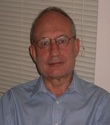
Biography:
Paul Comet is a Senior Inorganic Geochemist at Comet Environmental Consulting. He completed his PhD degree from University of Bristol, London in the year of 1983 and postdoctoral from Newcastle University in the year of 1985. His major interests are in developing sustainable economic frameworks for carbon fixation.
Abstract:
If organic waste can be converted to “free” energy, clean water, (& raw materials) for small scale manufacturing/ mending etc. for communal use, then a sustainable community has been created. If the goods, services & crops made are used internally, then maybe a local token currency based on joules of alternative energy from small scale electricity, gas & solar power generation could be used to serve the communities sustainable needs. Maybe silver jewelry/tourist items (woolen blankets) sold for “export” might bring additional (dollar) revenue for purchase of essentials made elsewhere, hence medicines/ hospitalisation/ cell phones/silver from elsewhere would have to be purchased with dollars derived from surplus energy, crops, tourist revenue & welfare. The token currency could not be used for “externals”. Some kind of community bank linked to the power station/ gasifier plant could be set up which would create “municipal energy tokens” based strictly on “redeemable (alternative) energy”. Thus a baked/painted clay pot only for domestic use would be sold for a number of joule tokens. This would include the energy cost in creating the fired pot, as well as the energy cost of the person creating it (food/shelter ).Government oversight would be required as too many tokens would wreck the system. The tokens would be non negotiable externally. Problems that I have not been able to solve are “equivalency” for even if the system “worked” then the tokens would circulate beyond the community as a useable currency, even if prohibited. If war / currency collapse etc disables the currency, then a network of independent sustainable local currencies might work. Hence an external energy source (sun), an ash pile & the contents of the chamber pot could be reborn as a lunar/martian colony filled with people & trees & crops etc. So given just a nitrogen & CO2 atmosphere, abundant water (& enough sunlight), the number of humans sustained in this system would be limited by the number of photons hitting the planet’s surface for the growing of crops, maybe in stacked glass towers. By monetizing fossil fuels you have the petrodollar - by monetizing the photon, whether captured in the waste stream, food or from solar panels, you have a sustainable economy. This scheme needs computer modelling.
Sudhir Kumar Tewatia
Inderprastha Engineering College, India
Title: Sustainable environment-challenges with future vision
Time : 09:40-10:00

Biography:
Sudhir Kumar Tewatia has completed his PhD in 2010 from Delhi Technical University, Delhi, India. He is the Director of Inderprastha Engineering College, a premier engineering institute. He served as Principal and Acting Vice Chancellor (Acad), University of Engineering and Management, Jaipur, India. He had served as senior scientist in ministry of water resources department. He has published several (25+) single authored papers in reputed international journals.
Abstract:
Sustainable development is a socio-ecological process characterized by the fulfillment of human needs while maintaining the quality of the natural environment indefinitely. The environmental stresses are not restricted to particular locales or geographic boundaries and affect the well-being of people everywhere. It is only through new sustainable approaches to development that the planet’s fragile ecosystems can be protected and the aims of human development be furthered. The goal of environmental sustainability is to minimize environmental degradation and to halt and reverse the processes they lead to. This paper deals with an approach to sustainable development emphasizing the need for new conceptions of global development that take cognizance of the fact that social and environmental problems are interconnected. One of today’s environmental challenges is to find ways of strengthening the scientific and socio-economic perspectives to help authorities make decisions and produce sustainable development strategies with a vision for future. The strategies will identify common goals and actions towards ensuring healthy human and natural environments, supporting emerging governance systems, advancing appropriate use of natural resources, building vibrant communities and influencing international activities. Sustainable development is about a more inclusive society, which provides for better protection of the environment and use of natural resources and shares the benefits of economic growth as widely as possible.
Adele Clausen
RWTH Aachen University, Germany
Title: The relevance of background systems on the carbon footprint of municipal solid waste management
Time : 10:00-10:20

Biography:
Adele Clausen studied environmental engineering (Focus: waste management) at RWTH Aachen University. After conducting different research projects in Thailand, she finished her studies investigating the potential of the Clean Development Mechanism towards developing sustainable MSW treatment systems in Thailand. Within her PhD studies, she focused on modelling of rMSW management deriving the models from her practical investigations of the related technical waste treatment processes. During the last years, she presented her research results at numerous international conferences. She submitted her PhD in April 2015, about MBT processes in consequential carbon footprint modelling of rMSW management.
Abstract:
Waste management is one target field, when discussing the options of climate change mitigation. The reduction of greenhouse gas (GHG) emissions from waste management is subject to different legislation (e.g. Kyoto Protocol, EU Waste Framework Directive), which all demand a shift from climate harming uncontrolled landfilling to climate friendly integrated waste management systems. However, the climate impact of different waste management options substantially depends on the individual context that waste management takes place in. Due to not only legislative requirements but also other societal drivers, integrated waste management is currently in the process of being established in many European countries with related decisions to be made. In order to allow decision makers for considering the climate impact of different waste treatment alternatives, tools are required that provide the option to compare the alternatives while taking into account the individual background conditions. However, a lack of appropriate tools was identified that allows comparing the climate relevance of the two most important residual municipal solid waste (rMSW) treatment technologies, which are waste incineration and mechanical-biological treatment (MBT). Hence, a model that applies a consequential life cycle assessment approach was developed. Those background conditions that impact the climate performance of either of the considered rMSW treatment technologies or related upstream/downstream processes were identified. The model allows adapting the background conditions to an individual (European) context. By modelling varying context situations, the relevance of different background conditions on the climate impact of MBT and waste incineration is assessed.
Cedo Maksimovic
Imperial College London
UK
Title: Integrated planning for urban sustainability and resilience to climate change and weather extremes: Blue Green Dream’s integrated interactions
Time : 10:20-10:40
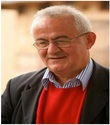
Biography:
Cedo Maksimovic is a Editor in Chief of Urban Water Journal, (ISI) and of Urban Water Book Series published by Taylor and Francis. He has published over 420 papers and authored and edited 42 books. He is a recipient of the 2009 ICE’s (Institution of Civil Engineers) Premium Prize "Telford Gold Medal" for the paper on intelligent sensors and networks. His research areas are Applied ICT in Fluid Mechanics, Hydraulics, Hydrology, Storm drainage, Urban flood modelling/prediction and risk assessment, BGD-Blue Green infrastructure, Sustainable Rehabilitation of Urban Environmental Systems, Water asset management, Urban stream rehabilitation, River Basin Management and Smart urban water systems
Abstract:
This presentation introduces the innovative urban planning method developed by the Blue Green Dream (BGD) project which is aimed at achieving high levels of sustainability and resilience to the negative impacts of climate change and extreme weather events on urban / built environment. The Blue Green Dream approach entails harnessing the interactions between urban water infrastructure, urban green spaces and other urban ecosystems and functions to yield sustainable, resilient city systems that move from centralized water, energy and waste utilities to decentralized but integrated systems. By interlinking urban water infrastructure (blue) and urban vegetated areas (green infrastructure) systems, resource efficient, multifunctional Blue Green Solutions for supporting urban adaptation to climate change are produced. The benefits of Blue Green Solutions include; (a) resilience to droughts & floods, (b) reduction of water, air and noise pollution, (c) mitigation of the urban heat island effect, (d) Increase of amenity, human health & wellbeing, (e) reduction of operational costs (lower energy & water bills), (g) enhancement of biodiversity & urban agriculture, (h) improvement of governance and reduced socio-economic problems. Key to the BGD concept is the replacement of conventional, linear urban resource flows with the BGD based, circular resource flow model, with localized recycling and generation of “new” resources.
Lamzira Lagidze
Iv. Javakhishvili Tbilisi State University, Georgia
Title: The role of landscape in cliamate formation (Samtskhe Javakheti region, Georgia)
Time : 11:00-11:20

Biography:
Lamzira Lagidze is an Associate Professor of Ivane Javakhishvili Tbilisi State University (TSU), Faculty of Exact & Natural Sciences, Department of Nature Use Management; Head of Department of Atmosphere Ecology, Institute of Applied Ecology at TSU. She has completed her PhD in Radio-Meteorology from TSU in 1985. She has published over 70 papers (some of them in reputed peer-reviewed journals), etc.
Abstract:
Georgia, which is characterized by complex physical-geographical conditions (altitude is in range of 0-5068 m) is considered as an example of mountainous country with diverse climatic conditions. In this regard especially, it stands out as one of the regions of Georgia Samtskhe-Javakheti, which is located in the South of country. Its climatic conditions significantly differ from other regions of Georgia. One of the reasons of its climate diversity are the character of underlying surface and altitude (900- 3300 m), surface dismemberment, repeatability of gorges, vegetation cover, which leads to an unequal heating of underlying surface and strengthening of circulatory processes. Vegetation cover in region is immensely transformed under influence of anthropogenic factors, which dramatically alters climatic conditions. The lowest absolute minimum of temperature in region ranges between - 29-41ºC. Absolute maximum temperature is 34-39ºC. Annual amplitude of temperature is as high as 24-25ºC, which refers to continental character of climate in this region. Annual precipitation level on the territory of this region ranges between 400-1400 mm. Key role in territorial distribution of precipitation here is played by landforms. Region is surrounded by high mountains on each side. Air flows are descending in nature, the moisture is limited therein. As a result, region is poor in precipitation. Prevailing winds vary widely in region and their direction is congruent with valleys. In many cases it became mountain-valley type. Region is rich in recreational terms and is important for study against the background of climate change.
Tanmay V Kotasthane
Jawaharlal Nehru Technological University, India
Title: Sorghum as lignocellulosic biomass for biofuel production
Time : 11:20-11:40

Biography:
Tanmay V Kotasthane is a young researcher having more than 7 years of experience in the area of feedstock development for biomass and bioenergy. He has published more than 10 research papers in national and international journals. Also he has contributed in the development of two sorghum variety. He completed Doctoral studies from JNTU Hyderabad, India.
Abstract:
Bio-ethanol from lignocellulosic biomass is one of the important alternatives being considered due to the easy adaptability of this fuel to existing engines and because this is a cleaner fuel with higher octane rating than gasoline. Biomass feedstock has significant potential to contribute biofuel production and to decrease green house gas emission. Cellulose makes a large fraction of the plant dry weight, being typically in the range of 35-50%. Lignocellulosic biomass is considered as the only foreseeable feasible and sustainable resource for renewable fuel; but the lingo-cellulosic ethanol commercialization is largely limited due to the lack of easily digestible substrate or cost effective processing technologies and cost of enzymes. Cellulosic ethanol is a biofuel produced from wood, grasses, or the non-edible parts of plants. It is a type of biofuel produced from lignocelluloses, a structural material which makes most of the biomass of plant. Pretreatment methods are not well established in rice bran, wheat straw. On the other hand special type of sorghum i.e., BMR sorghum can be used in introgression breeding program to develop low lignin cultivars suitable for pretreatment methods. Among all methods available for the pretreatment of lignocelluloses, acidic and alkaline treatments have been proven to have practical advantages. Sorghum feedstock is good cellulosic substrate for bio-ethanol production. Reduced lignin concentration in lingo-cellulosic biomass can increase forage digestibility and saccharification yields of biomass for bioenergy.
Julius Mandigma Galdiano
University of the Philippines
Philippines
Title: Tsunami hazard assessment along the coast of Lingayen Gulf, Pangasinan, Philippines
Time : 11:40-12:00

Biography:
Julius Mandigma Galdiano has completed his Masters Degree at the age of 38 years from National Graduate Institute of Policy Studies in Tokyo, Japan. He has completed his Graduate Diploma in Urban and Regional Planning from the University of the Philippines and Graduate Diploma in Tsunami Disaster Mitigation from the International Institute of Seismology and Earthquake Engineering in Tsukuba, Japan. He is the officer-in-charge of Sinait Seismic Station-PHIVOLCS. He is involved in researches on earthquake disaster mitigation. He co-authored several paper presented in scientific conferences.
Abstract:
This study discusses the tsunami simulation performed in Lingayen Gulf using two different earthquake scenarios. Three bathymetry datasets (GEBCO 1 arc-min, GEBCO 30 arc-sec, and GEBCO 30 arc-sec updated with digitized bathymetry points) were used and the resulting tsunami heights and travel time calculation were compared. The results further complement the objective of the existing tsunami sensor installed in Lingayen Gulf, which aims at giving timely warning when a tsunami strikes the coastal communities. The simulation results demonstrated that the two earthquake scenarios produced different tsunami heights and travel times. Also, the uses of GEBCO 1 arc-min and GEBCO 30 arc-sec bathymetry datasets have remarkable differences on the resulting tsunami heights and travel times. Whereas, the uses of GEBCO 30 arc-sec and GEBCO 30 arc-sec updated with digitized bathymetry points have negligible differences. The existing tsunami sensor is effective as an alarm system in the inner bay, while it is ineffective in the outer bay. A combination of the existing and a proposed site of tsunami sensor along the Lingayen Gulf would advance to a robust tsunami early warning system to the affected coastal communities.
Shadung J Moja
University of South Africa
South Africa
Title: Characterisation of dust fallout around the city of Tshwane in South Africa
Time : 12:00-12:20

Biography:
Shadung J Moja is currently teaching and supervising M&D research projects within the Department of Environmental Sciences (DES) at the University of South Africa (UNISA). His master’s and doctoral degrees are in Analytical Chemistry and Environmental Management respectively. He has served the academia for more than 16 years at 6 different universities. He also has 4 years of industrial chemistry experience and more than 3 years of consulting in air quality and waste management. He has published 15 peer reviewed articles.
Abstract:
The aim of the study was to characterize dust fallout in urban and sub-urban areas around Tshwane. The dust fallout samples were collected at five different sites following the internationally accepted standard procedure for collection and analysis, the American Standard for Testing Methods (ASTM-1982). Passive single buckets containing ¾ of distilled water and 10.0 ml of sodium hypochlorite (NaClO) solution, hoisted at a height of about 2.5 m were exposed from March – June 2013 and were collected every month end for laboratory analysis using Inductively Coupled Plasma – Mass Spectrometry (ICP – MS) and Scanning Electron Microscope – Energy Dispersive X- ray (SEM – EDX). A total of twenty (20) dust fallout samples were digested through heating on a hotplate with 5.0 ml of 70% HNO3 and 2.0 ml of 30% H2O2.The elemental concentrations measured using ICP – MS decreased in the following order: Fe>Ca>Al>Mg>P>S>Mn>K>Cu>Na>Zn>Pb>Cr>Ni>V>Co>Mo. Four (4) particle groups (quartz/silica, alumino silicates, industrial and biological particles) were identified with the SEM – EDX method of analysis. The particles ranged from 4 to 100 µm in diameter sizes and their morphologies included agglomerate and irregular.
- Workshop on: Blue Green Dream’s integrated interactions for integrated planning for urban sustainability and resilience
Location: Terra Mitica

Chair
Cedo Maksimovic
Imperial College of London, UK
- Workshop on: Wildland Fires and Climate Change
Location: Terra Mitica

Chair
Jaime Senabre
SINIF, Spain
Session Introduction
Jaime Senabre
SINIF, Spain
Title: Social risk perception and behavior before the possible disasters
Time : 14:40-15:00

Biography:
Jaime Senabre (1966). Psychologist (UNED). He has extensive postgraduate training, achieving a total of five Masters, including: Master in Occupational Health, Safety and Workplace Risk by Camilo José Cela University of Madrid; Master of Psychopathology and Health, UNED; Master of Civil Protection and Emergency Management, University of Valencia. He is also a Diploma in Psychological Intervention in Emergencies and Disasters, Environmental Consultant, Expert in Human Resources and Criminology. Director and Chairman of the Scientific-Professional Committee of the National Symposium on Forest Fires -SINIF (2008-2015)- and creator of “SINIF Awards”, for Innovation and Technological Research, Prevention and Management Development on Forest Fires Member of: Spanish Society for the Study of Anxiety and Stress, Spanish Association for Clinical Psychology and Psychopathology.
Abstract:
One of the reasons that an individual, a community and a society doesn´t act preventively against the probability of a risk is due to the perception people have about the likelihood of that risk and the proximity of their consequences. It can also happen that, while having a full awareness and perception of the probability of the risk, both individual and community and society doesn´t have the necessary resources to prevent or minimize it. A perception and resource availability must be added a factor, the will. The same risk can have different interpretations and meanings and affect health, the environment, property, future generations, etc. From this psychosocial approach to risk, when to assess, interpret and judge a risk we have to take into account a number of quantitative (eg. index of probability and amount of losses) and qualitative factors (eg. involuntary nature of exposure, lack of personal control, uncertainty about the likelihood or consequences of exposure, lack of credibility and trust in the institutions that manage). Also, the perception and the meaning that people can be attributed to the risk will be influenced by different types of beliefs, values and social contexts. On many occasions, low priority is given to some of the dangers related to the environment, which leads many companies to live on a stage of life "latent silent emergencies" which sometimes manifest themselves in varying degrees of threat, occurrence and intensity, reaching in some cases, to acquire the status of disaster, catastrophe or calamity. Human behavior in disasters, in diachronic sense of the incident, passes through three stages: before, during and after. Thus, the perception of risk has to be placed in the temporary time "before". We may be at an apparent dissociation between social risk perception and human behavior to the manifestation of disasters.
Alexander Burwitx Schwezoff
Nitrofirex, Murcia
Spain
Title: DRONES and night time aerial firefighting. The NITROFIREX project
Time : 15:00-15:20

Biography:
Alexander Burwitz Schwezoff is a pilot in the Spanish Air Force since 2000, he is presently posted as a Captain in the 43 Grupo water bomber unit. In over thirteen years he has broadened his national and international experience in fire-fighting operations, logging over 2.500 flight hours and 7.000 water drops over wildfires on the Canadair CL-415/215T. Since 2008, and right from its very beginning, has been part of Nitrofirex. He firmly believes that the future of aerial fire fighting lies in discovering a means of enabling a direct attack on the fire when it is at its weakest.
Abstract:
Nitrofirex is born with the idea of solving the technical barrier between forest fires and night aerial extinguishing applying currently available technologies. Nitrofirex stands for an innovative and globally unique solution that enables active aerial firefighting at nighttime by combining already existing RPAS technology. Here Nitrofirex introduces a completely new RPAS concept consisting in Autonomous Gliders Containers (AGCs) that are able to carry large amounts of extinguishing agent inside their tanks. Once being launched from the rear ramp of any heavy transport aircraft the formation of AGCs autonomously navigate to the fire and drop their extinguishing payload in a coordinated and sequenced manner. Immediately after the high precision release the AGCs climb to their safety altitude, return and land autonomously at the base of operation so as to be prepared for the next run. The application of sophisticated, already operative and mature technology leads to reduce crew risks during operations and significantly improve the operational efficacy and economical efficiency. Paradoxically in the sector of aerial firefighting no modern aeronautic technologies have been implemented up to now, if we compare it to all other sectors of aviation where the innovations have been really impressive. The amount of countries hit by forest fires is numerous. The heavy financial and human losses generate social unease and political concern. The impact on the environment incurs in a direct manner in harm to biodiversity and indirectly with the release of big amounts of carbon dioxide into the atmosphere.
Vicente Caselles Miralles
University of Valencia, Spain
Title: Forestfires, Climatic Change and Remote Sensing
Time : 15:20-15:40

Biography:
Vicente Caselles received the B.Sc., M.Sc., and Ph.D. degrees in physics from the University of Valencia, Valencia, Spain, in 1979, 1980, and 1983, respectively. He is currently Full Professor of Physics of the Earth and Head of the Thermal Remote Sensing Group, University of Valencia, Valencia, Spain. He has a 40 years expertise in the physical processes involved in the temperature measurement using remote sensing techniques, which has been documented through 20 books, 25 doctoral theses, 150 papers in international journals, 60 conference papers, and 30 reports. He has collaborated with the European Space Agency as member of the Advisory Group for the Land-Surface Processes and Interactions Mission. He was the Manager of the Spanish Atmosphere and Climate Programme. Dr. Caselles was the Chairman of the Spanish Remote Sensing Society.
Abstract:
Forest fires are one of the main agents involved in the change of structure and function of ecosystems. Remote sensing techniques allow obtaining land surface information and monitoring vast areas affected by fire. In this work we used a set of 5 Land sat 5 Thematic Mapper (TM) images, of the years 2007-2008, covering an area of forest and shrubs, affected by a fire in the summer of 2001. Two control areas (non-burned) were established, representative of the pre-fire conditions in the burned areas. The simplified two-source model STSEB was applied to elaborate instantaneous energy flux maps, at the time of the satellite over pass. A Bowen station placed in the study site permitted a previous validation of the results. Regarding the energy fluxes the most remarkable is the increasing of more than 150 W m-2 at instantaneous scale, and 40 W m-2 at daily scale, in sensible heat flux, and the decreasing of more than 250 W m-2 (8.8 mm/day) at instantaneous scale, and 60 W m-2 (2.1 mm/day) at daily scale, in actual evapotranspiration, observed in the forested area. In the shrubs area, the fire effect is almost negligible after 6 years, since the vegetation regenerates.
- Workshop on: Heliogerontology at the epoch of cosmoplanetary and climate changes
Location: Terra Mitica

Chair
Alexander Trofimov
ISRICA, Russia
Session Introduction
Alexander Trofimov
ISRICA
Russia
Title: Heliogerontology at the epoch of cosmoplanetary and climate changes
Time : 14:00-14:20
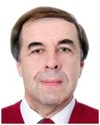
Biography:
Alexander Trofimov has completed his MD (Doctor of Medicine) in 1998 from Siberian Branch of Russian Academy of Medical Sciences. During many years he was (until 2010) Chief of laboratory of Helio-climatopathology of Scientific Center of Clinical and Experimental Medicine. From 1994 and now he is the director of International Scientific Research Institute of Cosmic Anthropoecology.He has 7 patents, published 6 monographs and more than 65 papers in reputed journals.
Abstract:
There investigated the author's hypothesis for amount of the solar activity during prenatal development of the human organism, detecting gene expression responsible for the level of metabolism and age processes that can restrict man’s lifespan and, specially, at periods of cosmoplanetary and climate change. Development of each person, since the prenatal period, proceeds in continuous interaction with helio-geophysical environment, depending on individual helio-magneto sensitivity of an organism. At the 6th European Congress of International Association of gerontology and geriatrics in St.-Petersburg, on July 5-8th, 2007 for the first time we have designated helio-biophysical aspects of geriatrics. The discussion proceeded at the 6th European Congress on biogerontology in the Netherlands on November 30 - December 3, 2008. There were shown significant differences in mean values of solar activity (Wolf number; W) on the 8th month of prenatal development in the persons of 30-50 years old (W=88.8+/- 12.2). On the other hand, in the persons of 51-70 years old (W= 88.4 +/- 8.4) as compared with the group of the elderly people of 71-90 years old (W=32.9 +/- 3.7) and longest living people, older than 90 years (W+32.9 +/-3.7), (P < 0.05). The pronounced group differences in prenatal helio-geophysical environment, estimated by using the computer program HELIOS (Ru Reg. Cert. 970125, 24.08.1997). Thus, the situation most favorable for long living arises in such cases that had shown the prenatal ontogenesis that runs in conditions of minor solar activity. It’s supposed that rate of organism aging in case of controversial helio-physical situation (high solar activity) may increase man lifespan restrictions. There was a task in view: To develop a new generation of helio-protector means for people with high helio-sensitivity and high risk of accelerated aging of increasing of sun proton streams at conditions of geomagnetic deprivation. Such means created and patented in Russia (patent RU 2342149, 27.12.2008), and they were named helio-gero-protectors (the beverages «AquaHelios», «Altin-Suu», «Heliostar-3»). Tests on bio-objects show high efficiency of such protectors on water and holographic basic increase in life expectancy of plants, the survival rate of flies-drosophila. It increases in level steroid hormones, anabolic processes and reduction of speed of aging estimated in relation of stable isotopes of carbon 13C/12C in tissues (hair) in males-rats (n=30), born at high activity of the Sun and using special informational light-a hologram (patent RU 2239860, 10.112004) or for drink within 1 month water helio-protectors. Change of the level of isotope 13C in tissues (hairs), where content was detected by mass- spectrometer Delta and the vector of correlation of the decreasing or increasing of this isotope with sun proton streams may be a new marker of rate of human aging and criteria of helio-gero-protectors efficiency. The approbation of similar water-protectors (beverages created by using new hypogeomagnetic and light-holographic devices on healthy people-volunteers (n=116). These volunteers prenatal ontogenesis passed in the background of high solar activity, showed significant changes in the vector of correlation dependence of their functional parameters from many factors (streams of protons, electrons, neutrons), i.e. reduction of helio-sensitivity of an organism. There are new helio-biophysical horizons of non-medical decrease in rate of human aging designated already.
Taisiya Kuznetsova
Research Institute of Cosmic Anthropecology
Russia
Title: Holografically processed water as a cardiovascular and psychophysiological helioprotector
Time : 14:20-14:40

Biography:
Taisiya Kuznetsova, PhD, is a cardiologist graduated from medical school in 1979 year, and is the chief of department of rehabilitation in Academician E.N. Meshalkin Novosibirsk State Research Institute of Circulation Pathology from 2000. Since 2014 she is the Director at The wellness centre methods "Apsara", and during many years she worked in various programs of International Scientific-Research Institute of Cosmic Anthropoecology, Novosibirsk.
Abstract:
Problem of geomagnetic deprivation is a problem of cosmoplanetary and climate change and have been recently increasing on account of sun’s protons stream, influence of solar at conditions of geomagnetic deprivation. Cardiovascular system is the most sensitive for helio-geophysical factors: Dynamics of morbidity, frequency worsening. To observe study by International Scientific-Research Institute of Cosmic Anthropoecology holografic processed water is helioprotector means, there had been an experimental study in Novosibirsk with holografically processed water. Object of study was effects for hemodynamics and psychophysiological parameters from drinking holografically processed water and change functional dependence from heliogeophysical factors on different phases of ontogenesis. Design: Study starting parameters, before and after drinking water. There were two variety of the water: control and experiment. Healthy volunteers (7 women and 1 man, mean age- 51 year (38-64) ) have signed voluntary consent. Healthy volunteeries had been drinkihg water for 7-10 days in number оne of liter/day. There was double blind investigation. Study methods: • Speed of running of the pulse wave, endothelial function (EF) had made on the device « Tonocard», the company OOO « AMDT», Russia. • The critical frequency of merge light flashing (CFMF) - reflects the mobility of nervous processes in the cortical division of visual analyzer, diagnoses pathologic processes of vision, the degree of fatigue of the eyes. Simple visual-motor reaction (SVMR) – identifies type of nervous system, power and balanced of nervous system. Reaction to a moving object (RMO) –reflects balance of nervous processes and functionality. It had made on the device «Neurosoft», Russia. • Diary of observations; data, the time and conditions of birth. • Programs of statistical processing «Stastistica 6.0». Heliophysical settings used: Sun's proton streams and these metrics, had been done in this study. Statistical correlation analyses were done. There were shown positive change in function of endothelium. It is known function of endothelium is main factor biochemical and physiological process, which is being in vasculars. It was shown significant positive change in endothelial function; this means influence of drinking holographically processed water to appearance of cardiovascular disease. It was revealed correlation CFMF, increasing after drinking holographically processed water, with the number of Wolf (NW) at the moment the ninth month of prenatal development. Also It was revealed significant inverse correlation between physiological and heliophysical parameters. It shows about synchronizing the influence of holographically processed water to physiological and hemodynamic parameters. This means helioprotectory influence of holographically processed water. This creates great prospects to use holographically processed water for people sensitive to heliophysical settings and climate change.
Marina Trubina
Russian State Hydrometeorological University
Russia
Title: Project “Biomet_Forecastâ€: Human’s adaptation to weather changes
Time : 14:40-15:00

Biography:
Marina Trubina has completed his PhD from Russian St. Hydrometeorological University (RSHU), St. Petersburg. She is the director of computer center, researcher and assistant professor from RSHU, has published more than 200 papers in scientific journals. She is Chairman of the Commission of medical geography of the Russian Geographical Society, a member of the International Society of Biometeorology (ISB), renowned expert in the field of applied climatology, biometeorology, human ecology and space weather. She actively participates in scientific activities in Russia and the world.
Abstract:
Weather and climate have a multifaceted impact on human health, and the processes of human’s adaptation to different climatic conditions depend on the medical and geographical characteristics of the regions of human habitation, the state of his health and genetic factors. The universality action heliogeophysical, climatic and weather factors on biological objects, and above all a man requires a modernization of special methods for assessing and predicting environmental comfort and health of the population, given the current criteria and age groups (older people in risk group), which is especially important in terms of global climate change. Development innovative Project “Biomet_Forecast” for practice shows that this complex is always allocated the most urgent problems that should be addressed immediately use the biometeorological assessment of weather and climate of especially extreme characteristics which influence health and main types of a disease. The purpose and tasks of the presented work is the: 1. Investigation of the complex environmental parameters in the region of St. Petersburg and their influence upon the human health; 2. Establishment system of early warning of adverse weather or environmental conditions in the megalopolises; 3. Development of methods of an assessment and forecasting of meteorological and geophysical factors, and possible environmental pollution in various climatic and physiographic conditions. The social meaning of project “Biomet_Forecast” is important because research results forecasting are presented in mass media for a wide audience.
Vincenzo Valenzi
CIFA
Italy
Title: Air ions: influences on microclimate modifications and the interactions with human physiology
Time : 15:00-15:20

Biography:
Vincenzo Valenzi is the President from 2007 of CIFA, Centro Studi di Biometeorologia Roma, and Director of Integrative Medicine department in IURS.
Abstract:
The atmospheric electric charge plays an important role both on the climate genesis and on the weather evolution. And it is a parameter to measure air pollution, mainly in confined environment. A high correlation can be shown between the electric conductivity of the low atmosphere and the air ionization, which determines the formation of the microclimate in which the man lives. At the same time, we can exhibit a model that is able to focus on the importance of the amount of positive and negative ions in influencing both the physiological parameters that the behavioral ones in man. New profiles of research demand new techniques of measurement to improve the results already obtained and to get a better control of the phenomenological aspects; in order to build models or theories that can give a deeper insight of many interaction mechanisms. The models we are working on need to be checked by a measure instrument with a higher resolving power, thus we are preparing an advanced electronics device to reveal and measure air ions, their electric current and other important parameters. About this instrument, it will be the “Generation II” of another one, that already got appreciable results in researches performed for all these years: the goal is to improve the general performances; mainly, to reach a resolving power up to a 10 Fenton Ampere current (10-5 nA).
Gualtiero A.N. Valeri
CIFA
Switzerland
Title: Recovery of Agriculture and Biodiversity for the protection of the Climate
Time : 15:20-15:40

Biography:
Gualtiero A.N. Valeri, General Secretary of CIFA - International Committée for Research and Study on Environmental Factors, Bellinzona.President of Montevenda Engineering International Association, Lugano Confirmed Professor at Universitary Hight School “St. Rita”, Florentia Owner of Valeri Consulenza Industriale – Main Office in Lugano, Experimental laboratory in Stabio
Abstract:
Over the past three decades there has been much talked about, at all levels, the problem of climate change, and the extent to which it is due to natural and/or anthropogenic factors. Beyond this, however, it is an important question and that is could answer even assuming a competition to both natural and artificial factors, is to keep in mind that the climate of our Planet, even in historical times, it has undergone many significant and sometimes sudden changes, even when it was not possible to attribute to them an important competition of human activities.However a new fact with respect to the past centuries, and very important, is that the change currently underway on Humanity could have a much greater impact than in the past. For example, when the oceans will increase in level, will not be the most affected by this few million people living in small or medium-sized coastal towns, but billions, and their migration towards more internal areas of the continents would appear as an exodus unprecedented in history of Humanity. Another example, is that changes in climate are changing not only the agricultural productivity in many regions of the Planet, but also the nutritional value of some cultivated species: in recent times has been highlighted a significant fall in nutritional power of rice cultived in the Far East, which could result in a serious nutritional deficit to two billion people.Among the measures that will have a preventive double effect on those described above, the recovery of biodiversity of plant species (that would protect at the same time, too many animal species from extinction) and the re-launch and recovery of agriculture, especially a “sustainable agriculture”. In this sense we have, for example, in the world today large areas desertified or whose fertility is drastically decreased. As is well known, the different plant cover of the soil also affects significantly the amount of solar radiation reflected and/or absorbed. The presence of a plant cover also prevents soil erosion and adjusts the evaporation of water from the soil. Specific plant species can facilitate the process of elimination/immobilization of to natural or artificial toxic contaminants restoring the balance altered. Also, and not least, is to investigate the effect it can have some plant species more than others on the electric charges of the atmosphere, which could derive action about form or less of precipitation.The restoration and upgrading of many agricultural desertified or abandoned areas would give a significant positive contribution about what is expressed above, but also would prevent the adverse effects on human communities resulting from a decrease in food availability caused by climatic changes, both contrasting phenomena that would make anyway hard to stay human, such as changes in the microclimate, floods, landslides, decreased availability or contamination of water resources.Complementare ed indispensabile ai fini esposti è una corretta gestione delle risorse idriche sia regimando le acque, sia migliorando la loro utilizzazione, sia prevenendone la contaminazione. Complementary and essential in order to above, is proper management of water resources, both regulating the superficial waters (rivers, lakes, etc.), either by improving their use, both by preventing contamination. In this sense, at present, is developing a omportant project to restore the environment and agriculture in the Ecuadorian province of Bolívar (not far from the volcano Chimborazo), together with the State University of Bolívar, from which it is believed will return results relevant to verification of the abo.
- Track 4: Climate Change and Extreme Weather
Track 6: Global Warming and Environmental Change
Track 10: Effect of Climate Change on Ecosystem
Location: Terra Mitica

Chair
Piret Plink-Bjorklund
Colorado School of Mines, USA

Co-Chair
Xuegong Xu
Peking University, China
Session Introduction
Binita K C
Northeastern University
USA
Title: Climate change vulnerability projection in Georgia
Time : 16:00-16:20
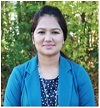
Biography:
Binita K C received her PhD in Geography from the University of Georgia, USA in 2014. She is currently working as a Postdoctoral Research Associate in School of Public Policy and Urban Affairsat Northeastern University, Boston, USA. Her research integrates climatic, spatial, and social components to study the human-environment interaction. She was actively involved in research activities with multiple agencies including National Aeronautics and Space Administration (NASA), International Centre for Integrated Mountain Development (ICIMOD) Nepal, and US Forest Service (USFS) and is currently involved in modeling the feedbacks of urban heat island effect with socio-economic changes at the Northeastern University.
Abstract:
This study captures climatological, social, and geographic vulnerabilityat the county level, for the state of Georgia in the 2030s (2025-2034). Climate change vulnerability is measured in terms of exposure, and sensitivity. Future exposure is measured as anomalies in projected mean temperature and precipitation compared to the historic baseline (1971-2000) temperature as well as frequency of heat waves and extreme precipitation days using CMIP5 projections. Future sensitivity is measured as social vulnerability, which is derived through cohort component projection, and geographic vulnerability is measured as potential inundation due to future sea level rise. Warmer and dryer conditions, indicated by greater anomalies in mean temperature and precipitation compared to the historical baseline climate, are projected in the metro Atlanta counties as well as in the western part of the state. Extreme precipitation events are expected to occur in the northern counties whereas most heat wave events are projected in the metro Atlanta counties especially under the RCP 8.5 scenario. Counties in southwest Georgia, known as “Black Belt” counties, and the metro Atlanta counties will emerge as socially and climatologically vulnerable in 2030s. Coastal counties specially, Chatham County, emerged as the most vulnerable after considering the geographic vulnerability.
Piret Plink-Bjorklund
Colorado School of Mines
USA
Title: Intensification of extreme precipitation – ancient archives predict the future?
Time : 16:20-16:40

Biography:
Piret Plink-Björklundhas completed herPhD at the age of 28 years from Göteborg University and postdoctoral studies from University of Wyoming.She is Associate Professor at Colorado School of Mines and leads a research group of 10 PhD students focusing on precipitation signatures of past greenhouse climates and morphodynamics of sedimentary systems.She has published more than 35 papers in reputed journals, and has presented invited talks at numerous universities, industry and international conferences.
Abstract:
Changes in the frequency or intensity of extreme weather and climate events have profound impact on both human society and the natural environment.Rising concentrations of greenhouse gases may already be influencing the intensity of rainfall. Yet, such extreme weather events remain ambiguous to predict, or even determine whether linked to global warming or short-term variability, showing that these climate processes and their drivers are not yet well understood. Extreme precipitation events, where most of the average annual precipitation falls during a few high-intensity events, are in current climate conditions most frequent in the monsoonal and the bordering subtropical zones, linked to the seasonal migration of the Inter-Tropical Convergence Zone. A recent review of modern and ancient monsoonal and subtropical river systems shows that such rivers display distinct sedimentary characteristics as a function of frequent extreme precipitation induced high-magnitude floods. More than 80% of water discharge and almost 100% of sediment loadis transmitted during such events, as only the flood discharge is the efficient discharge, able to transport sediment. As a result such river deposits are an archive of high-magnitude floods and thus an archive of extreme precipitation events that induced the floods. Analyses of river deposits from some past greenhouse climatesindicate long-term intensification of extreme precipitation and poleward expansion of monsoon-like precipitation patterns. These data suggest Hadley Cell expansion as a response to global warming, and support the hypothesis that current intensification of extreme precipitation is indeed linked to the anthropogenic global warming.
Xuegong Xu
Peking University
China
Title: Risk assessment of sea level rise in the coastal zone of Tianjin, China
Time : 16:40-17:00

Biography:
Xuegong Xu is the corresponding author of this paper. She has completed her PhD from Peking University in 1993 and is a professor of Peking University now. She has published more than 100 papers in reputed journals.
Abstract:
Global warming and sea level rise are serious issues of coastal zone development. Coastal zone is a vulnerable area with dense population and estates convergency. The study area—Tianjin coastal zone is an important new developmenting area in north China but bears more and more stress facing the risk of sea level rise. As local area, it suffers from relative sea level rise which not only as global warming but also as local land subsidence, both aspects add and form a place with one of highest sea level rise. By using sea level data of tide gauge station and a stochastic dynamic model, combining with wavelet analysis and relative models, sea level rise to 2020 and 2050 are predicted, and extreme storm surge is calculated. Based on the data of precise leveling survey, spatial distribution and variation trend of land subsidence in Tianjin coastal area are predicted using water resource supply and demand balance analysis and subsidence control policy scene setting. According to land use and city plan, risk assessment for sea level rise with storm surge are made. Assessment results show the losses of submerged area in different situation. It will provide scientific basis for regional risk management and adaptive coastal development. This research is financially supported by the NSFC Project (No.40830746 and 41271102).
Muhammet Turkoglu
Canakkale Onsekiz Mart University
Turkey
Title: First bloom record of toxic dinoflagellate Prorocentrum lima (Ehrenberg) F.Stein, 1878 and climate change interactions in the Dardanelles (Turkish Straits Sistem)
Time : 17:00-17:20

Biography:
Muhammet Turkoglu has completed his Ph.D in the 1998 from Ege University, Turkey. Currently, he is an associate professor of Marine Science and Technology Faculty in Çanakkale Onsekiz Mart University. His research has involved studies in Aegean Sea, Black Sea, Turkish Straits System including Dardanelles, Sea of Marmara and Bosphorus and Caspian Sea. He has been interested in marine phytoplankton species distribution and ecology especially in coastal habitats and also in harmful algal blooms (HABs). He has nearly 100 scientific studies published by various reputed scientific journals and others.
Abstract:
This investigation focused in daily variations in cell density toxic dinoflagellate Prorocentrum lima between 09 July 2013 and 06 August 2013 in the Dardanelles. The sampling period was excessive bloom period of both dinoflagellates and diatoms. The bloom of toxic dinoflagellate P.lima was recorded as a first time in the Turkish Straits System. During the bloom the cell density of P. lima reached to 2.40 x 106 cells L-1 and exhibited four excessive blooms over 1.0 x 106 cell L-1 during a month. The contribution of P.lima to both Prorocentrum spp. and dinoflagellates reached to 100%, particularly in the intervening period of the excessive bloom time and it was attested by regression (R2=700-800) and correlation findings (R=800-900). Nutrient concentrations were lower than previous concentration levels due to excessive blooms. Concentrations of NO-2+NO-3, PO-34 and SiO4 varied between 0.20 and 0.78 µM (average: 0.44 ± 0.17 µM), 0.08 and 0.18 µM (average: 0.12 ± 0.03 µM) and 0.25 and 0.65 µM (average: 0.41 ± 0.09 µM) respectively. During the bloom, nutrient ratios (N:P, Si:P and Si:N) were more different than Redfield ratios due to eutrophication and ratios of N:P, Si:P and Si:N varied between 1.57 and 7.50 (average: 4.04 ± 1.74), 1.67 and 6.50 (average: 3.79 ± 1.24) and 0.51 and 1.95 (average: 1.04 ± 0.36). Chlorophll a concentration varied between 1.57 and 8.52 mg L-1 (average: 4.82 ± 2.29 mg L-1) in the bloom period. During the bloom temperature, salinity, pH and dissolved oxygen (DO) levels were approximately constant and changed from 24.0 to 25.0 oC (average: 24.7 ± 0.44 oC), from 21.4 to 23.5 ppt (average: 22.9 ± 0.49 ppt), from 8.01 to 8.54 (average: 8.23 ± 0.15) and from 6.05 to 8.65 mg L-1 (average: 7.35 ± 0.60 mg L-1). The compact bloom of P. Lima, such as excessive blooms of other dinoflagellates and diatoms, was associated not only with eutrophication, but also with climate change interactions.
Ibrahim M Metwally
Zagazig University, Egypt
Title: Earth contraction and global Earth temperatures
Time : 17:20-17:40

Biography:
Ibrahim M Metwally is a Registered Consultant Engineer, who completed his master and PhD from CSU, USA in 1985 and 1990 respectively. He is a top-notch and innovative leader with more than 30 years in higher education and industrial sectors, dynamic leader and team builder, consistently motivating others towards success, persistent and flexible approach to the mutually beneficial achievement of work plans and personal goals of staff, and creative problem solving and first-class analytical skills. He has extensive original research in civil engineering (35 Published Papers) with 7 new theories in soil liquefaction and earth science, more than 20 TV programs, with outstanding productivity both as a civil engineering consultant and as a Professor, and high capability of handling complex and difficult problems and situations. He has high personal integrity, and is able to relate to and create trust in others with different cultural backgrounds.
Abstract:
Volcanism outcomes themselves may have a minor effect on global earth atmosphere. However, Volcanism activities have a great indirect influence on global earth temperature, through its effect on earth size and its orbit around the sun. Within the framework of continuum mechanics, this paper presents the effect of volcanism activities on earth size that can be driven mathematically and proof earth contraction. This contraction is the major contributors for global earth temperature changes, as contraction changes both the distance of earth to sun and the inclination angel of sun rays on earth. A hundred million cubic kilometers of volcano outcomes would decrease the radius of earth by less than 2 km approximately. As the volcanoes outcomes increase gradually, contraction accumulates gradually over time to be significant. That would result in very slowly but continuous changes in the position of the earth relative to the sun that has the most dominating influence on the changing climate of earth. The paper discusses the relationship between volcanoes outcomes and global earth temperature changes.
- Workshop on: Creating a Cubic Cloud: Microclimatic phenomena into nanoporous materials
Location: Terra Mitica

Chair
Ioannis Michaloudis
Kingdom University, Bahrain









